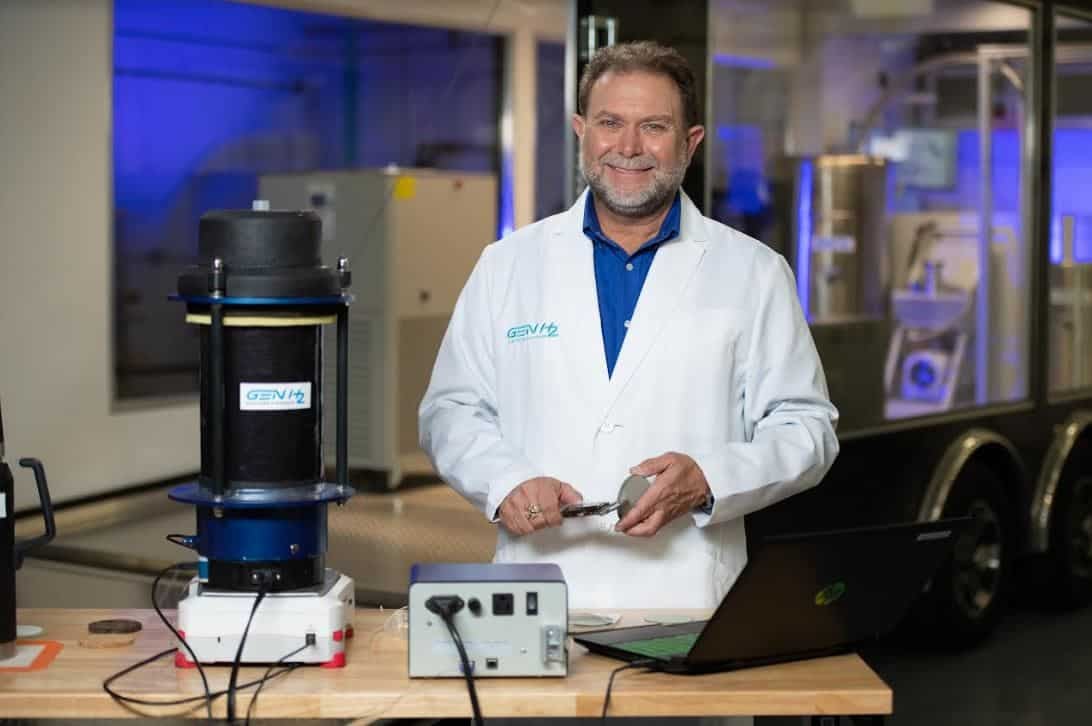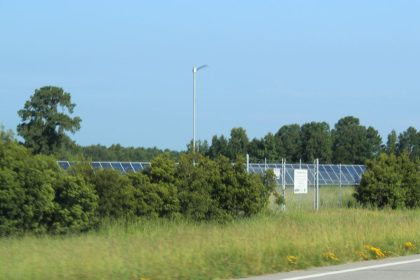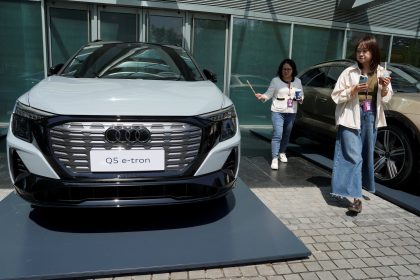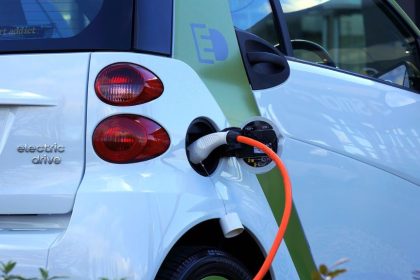Inflation Reduction Act Gives Major Boost to Hydrogen Sector

WASHINGTON — When President Joe Biden signed the Inflation Reduction Act into law on Tuesday, business leaders throughout the renewable energy sector cheered the finalization of the nation’s largest ever investment in climate and the clean energy solutions of the future.
While many people hearing about the bill saw visions of windmills and yards of solar panels in their imagination, the landmark bill is seen as an even bigger win for what could be called the future hydrogen sector of the economy.
To the technologically savvy, the promise of hydrogen has long had a sparkly sheen to it.
It can be produced from renewable energy or nuclear power, with minimal greenhouse-gas emissions, and it can be transported to just about anywhere in the country, using existing infrastructure.
It can provide power for nearly every mode of transportation, from the forklift to a transport-size ship or aircraft, and its advocates call it the perfect ultimate replacement for fossil fuels.
Still, for any number of reasons, the hydrogen industry has always seemed prone to fits and starts.
“They’re way ahead of us in Europe,” has been a common refrain, and over the past year especially, the U.S. Energy Department has taken several steps to drive down the cost of low-carbon hydrogen and stimulate demand for it.
The Inflation Reduction Act takes those efforts to a whole new level by offering $3 per kilogram in tax credits for low-carbon hydrogen production, which could make the clean energy carrier markedly cheaper than dirtier, so-called “gray” hydrogen that currently dominates production.
Gray hydrogen is derived from natural gas through a process called steam reforming. Production of gray hydrogen creates from 8 to 12 kilograms of CO2 per kilogram of hydrogen produced. Costs of gray hydrogen vary but are roughly $2/kg in the United States.
Nearly all of the hydrogen made in the United States is produced this way. Green carbon, created by electrolysis using a renewable energy source, makes up less than 1% of total output.
Set at a basic rate of $0.60/kg, the new law will use a scale of credit calculation based on lifecycle emissions (measured in carbon-dioxide equivalent), offering hydrogen manufactured with 0.45-1.5kg, 1.5-2.5kg, and 2.5kg of lifecycle emissions the chance to collect 33.4%, 25% and 20% of the credits respectively.
Aside from credits for production, the bill also offers a revision to the electric vehicle tax credit to include hydrogen fuel cell-electric vehicles, with up to $7,500 available for new vehicles and $4,500 for used vehicles.
“I am really excited about the package and the fact that steps are being made,’ Cody Bateman, founder and CEO of a company called GenH2, told The Well News shortly before the president signed the bill into law.
“It’s an exciting time for renewables in general and for hydrogen, specifically,” he said.
According to its website, GenH2, which is largely staffed by former NASA scientists and engineers, specializes in developing solutions for the commercialization of carbon-dioxide free hydrogen production, storage and dispensing.
Bateman explained that he started GenH2 by funding the company himself, and then getting seed money from like-minded investors.
“The one thing I think we all shared was the belief that hydrogen will play a critical role in the nation’s energy future and that you just couldn’t sit around and wait for grants and the like to come through,” he said.
“What this means is we’ve been very proactive in working to build out the infrastructure for the hydrogen economy to come, developing technology not only for NASA, but also the Department of Energy and the Department of Defense.
“So we weren’t waiting for this legislation to pass,” he said. “What I will tell you, however, is that the Inflation Reduction Act will give us a significant boost and enable us to raise additional funds that will allow us to grow the company even further.”
Like others, Bateman believes the United States is about three or four years behind Europe in terms of fostering the development of the hydrogen sector, but that doesn’t mean significant developments weren’t taking place here.
“In fact, the genesis of GenH2 was to fill in the gaps between the developments that were occurring,” he said.
“I mean, you’ll see a lot of media reports about ‘hydrogen hubs’ and these large, hydrogen-related infrastructure projects being done by the major oil and gas companies, but what’s been missing is a way to fill the gaps between them.
“I use the analogy to the old cell phone coverage maps, where they used blue or pink dots to show where their coverage is — and you could easily see the gaps in where the 5g coverage was; well the same thing is true for hydrogen right now, but actually worse.
“Thankfully, through the technology we’ve developed for government agencies, we now have the ability to start creating that infrastructure and we’re going to fill in those gaps,” he added.
Bateman went on to explain that hydrogen isn’t a producer of energy like wind, solar or geothermal apparatus, but is rather a medium for moving that energy about.
“Traditionally, when it comes to energy, you either push it back onto the grid or you can store it. That’s why, as a nation, you see us use a lot of lithium batteries,” he said. “The problem with that is it increases the need for Rare Earth materials, of which there is a limited supply, and then you have to worry about what you’re going to do with these batteries once they age out in 10 or 12 or 15 years.
“Hydrogen replaces all of that,” Bateman said. “Once the energy comes in, you can store it in either a liquid or gaseous form. We focus on liquid because the goal is energy density and how you move it from point A to point B.”
Reflecting on the experience of being an early player in hydrogen in the U.S., Bateman said GenH2’s earliest projects with the Energy Department focused on cryogenics, as liquid hydrogen is extremely cold and evolved from there to designing and implementing “the latest and greatest” hydrogen storage techniques.
“Large scale is actually easier because the larger the quantity of liquid, the easier it is to control and maintain,” Bateman said. “The big issue is how do you design something that’s more efficient at scale? And that’s exactly what we’re working on for the Department of Energy now.
“At the same time, the Department of Defense came to us and said they’d like to look at hydrogen at an even smaller scale, to be able to power things like Humvees out in the field, or even drones,” he said.
“All of this activity underscores what an exciting time we’re in as far as hydrogen is concerned,” he continued. “And I haven’t even mentioned the work we’re doing with oil and gas companies and universities … everybody, it seems, is coming on board, and all of this happened prior to the Inflation Reduction Act, which means people were thinking forward.”
Getting back to what is actually in the legislation, Bateman said one provision he is particularly pleased with is one that mandates the transition to clean, heavy duty vehicles.
“It shows, first of all, that people have come to understand where hydrogen really can be used, to have its greatest impact,” he said. “And I say that because we believe replacing that dirty diesel fuel is the near-term future for hydrogen.
“Previous legislation focused on passenger vehicles; this bill was drafted with someone taking the time to consider how many heavy duty trucks are running up and down Interstate 95 and Interstate 10, and saying, here’s where we can do something truly meaningful about emissions. … this is where we can get the most bang for the buck immediately.”
Another thing Bateman likes about the hydrogen-related provisions in the bill is that it has already heightened awareness about the work being done with hydrogen.
“So I think, more than anything, the mere passage of this bill is going to enable the hydrogen economy to come here a lot faster than it would otherwise,” he said.
But Bateman does have his reservations.
“My biggest concern is that massive amounts of this money are going to go to the big guys, the guys that pay for the lobbyists and those kinds of things, because there doesn’t appear to be a mechanism in the bill to drive funding expressly to the smaller companies that the innovation is coming from.
“It’s innovation that leads to long term success versus a short term thing where you just take the money, build something out just to get the money and then it dies,” he said. “We have to look at the long term. This is a 2030, 2040, 2050 solution and looking at it from that point of view, I don’t think they encouraged innovation and the smaller companies that create it in this version of the bill.
“That’s not to say innovation won’t happen; but what I am saying is that there are a lot of companies, like ours … that can benefit greatly from this, so long as they can get their hands on the money. That’s a little more difficult to achieve the way this bill works.”
Dan can be reached at [email protected] and at https://twitter.com/DanMcCue.























